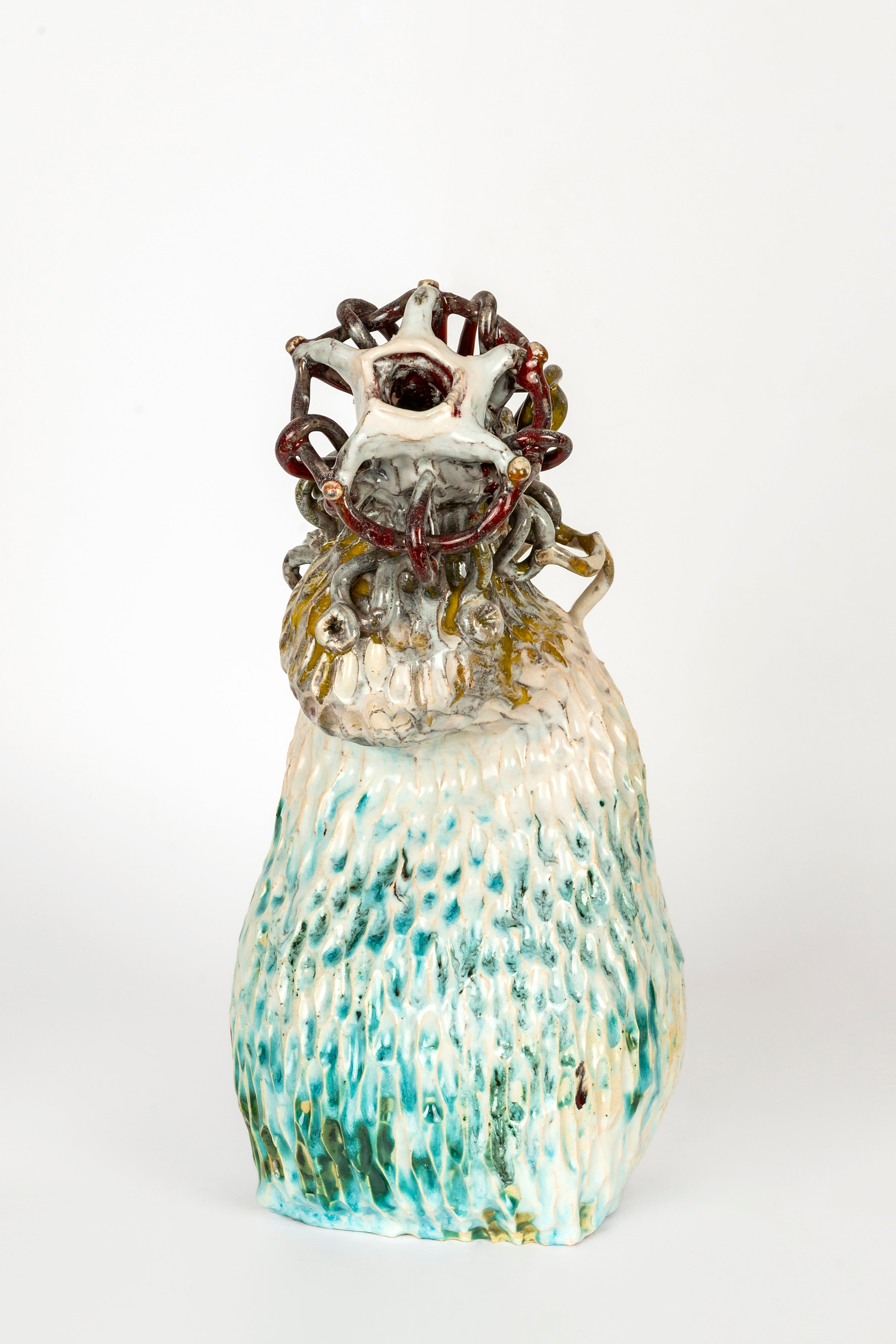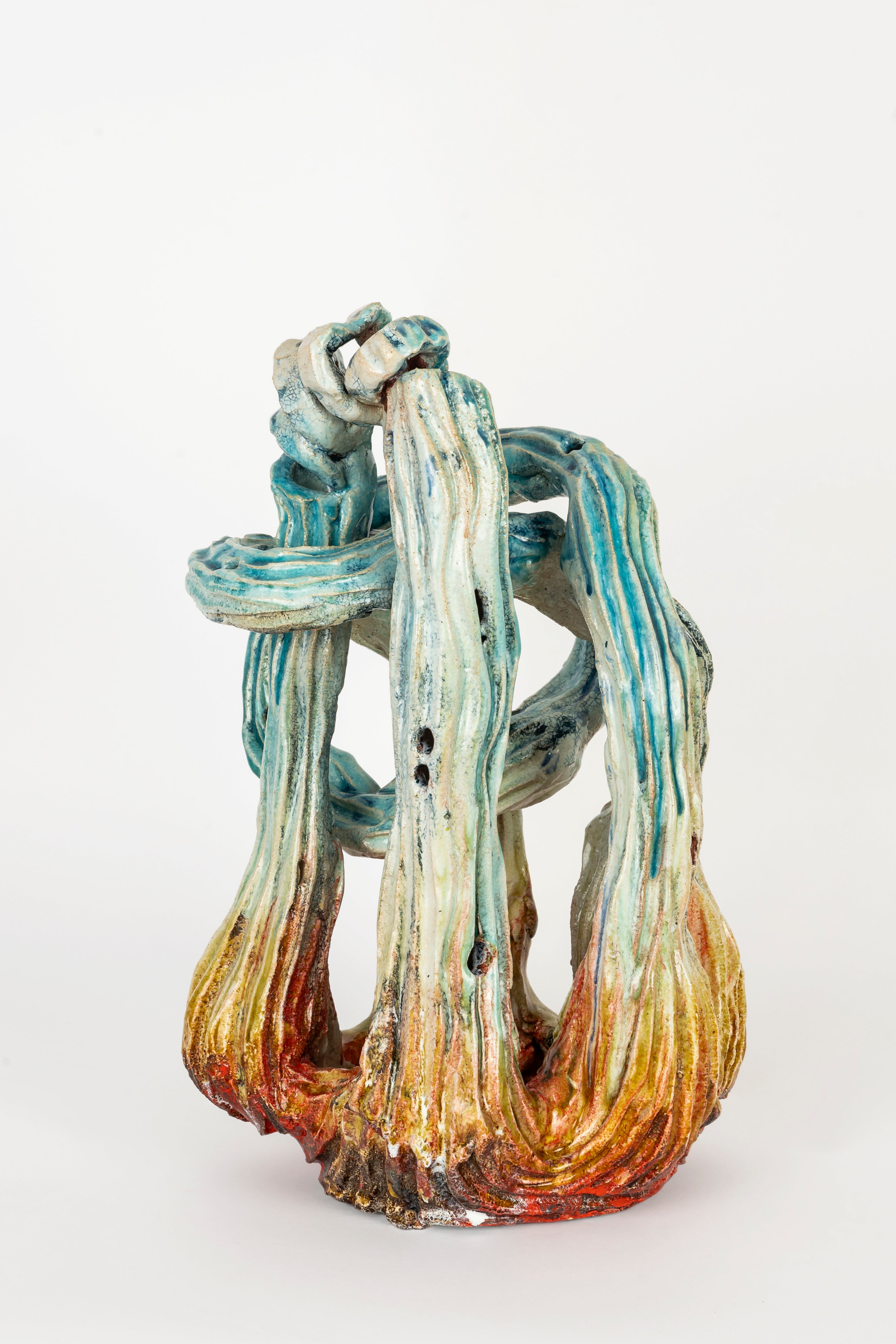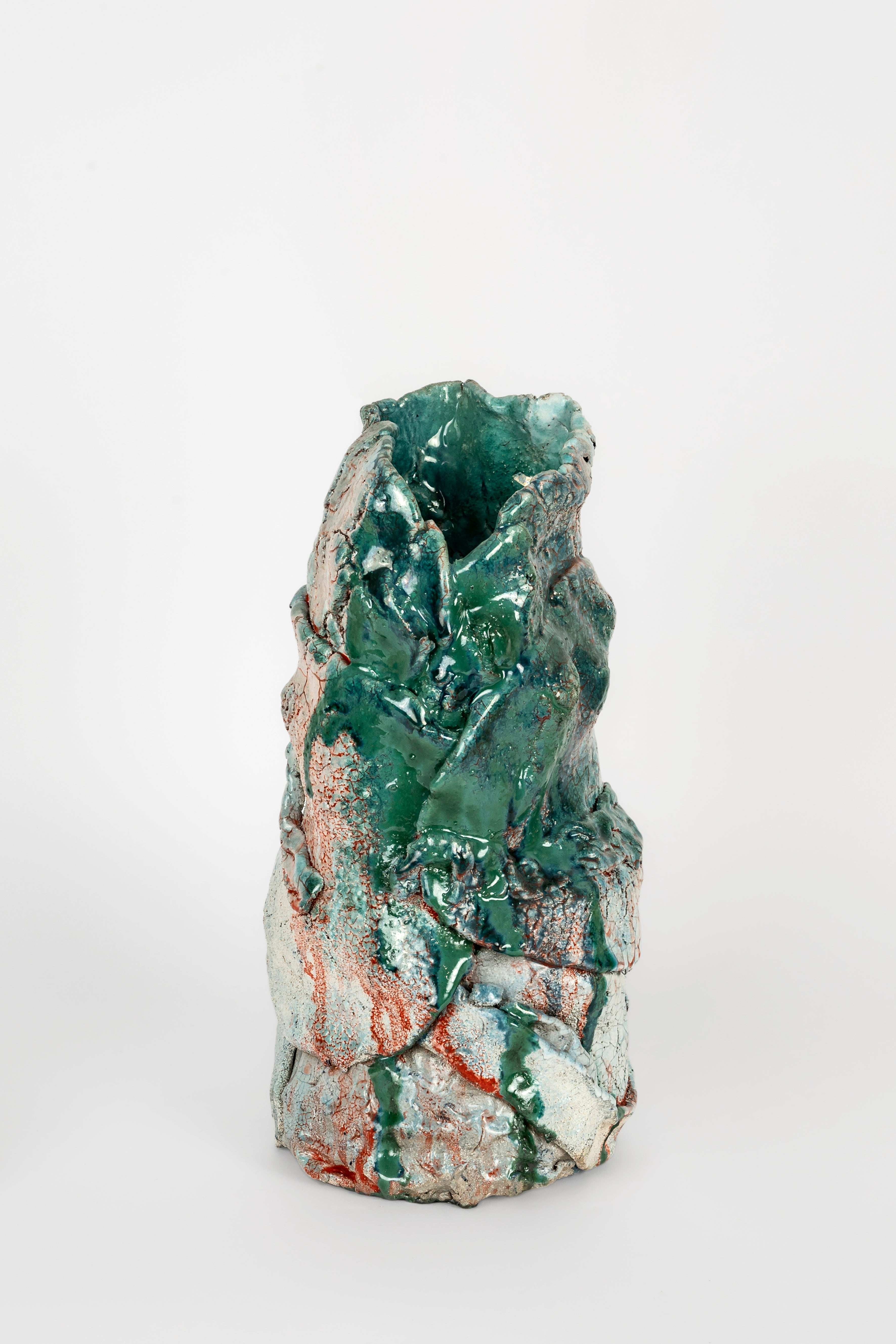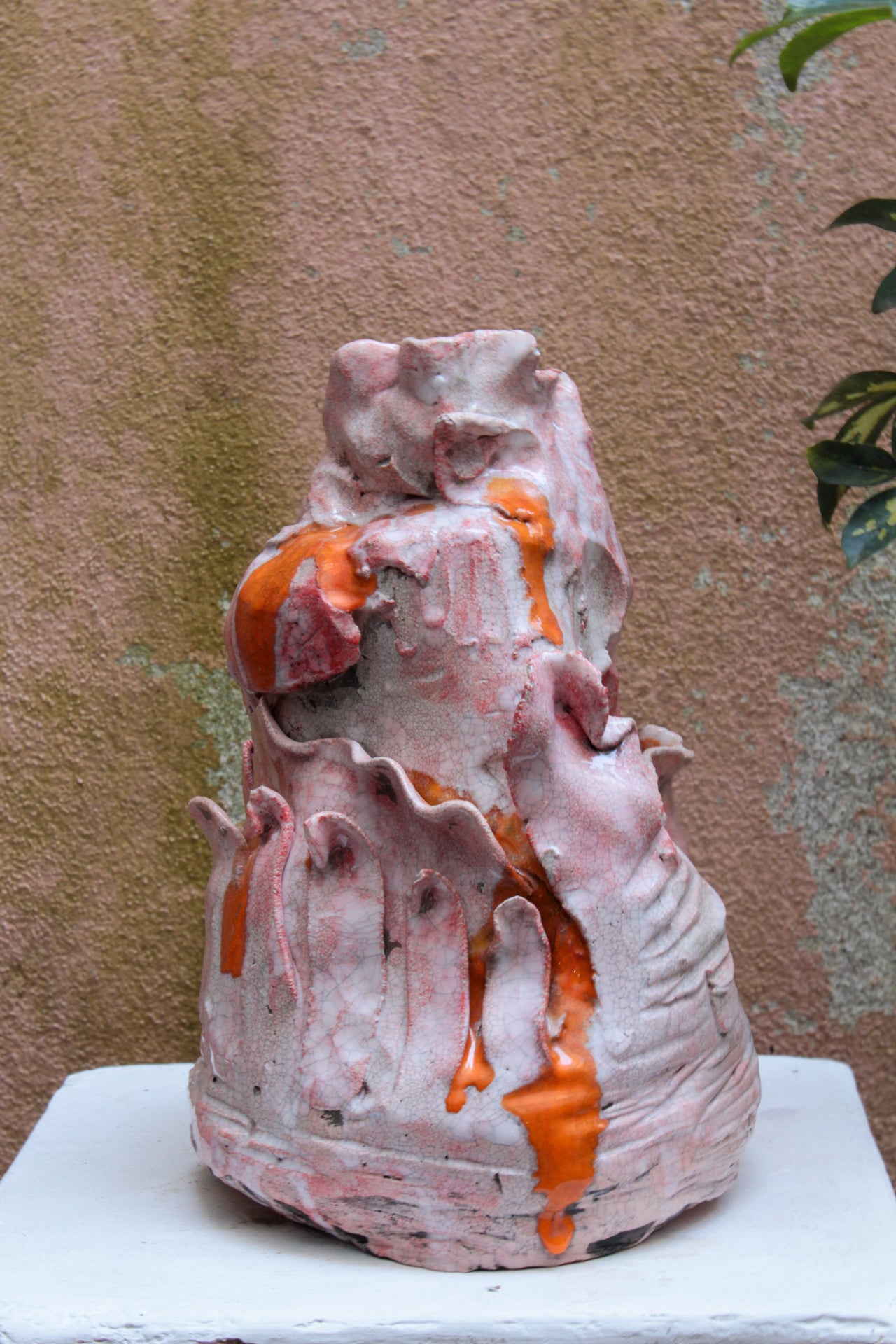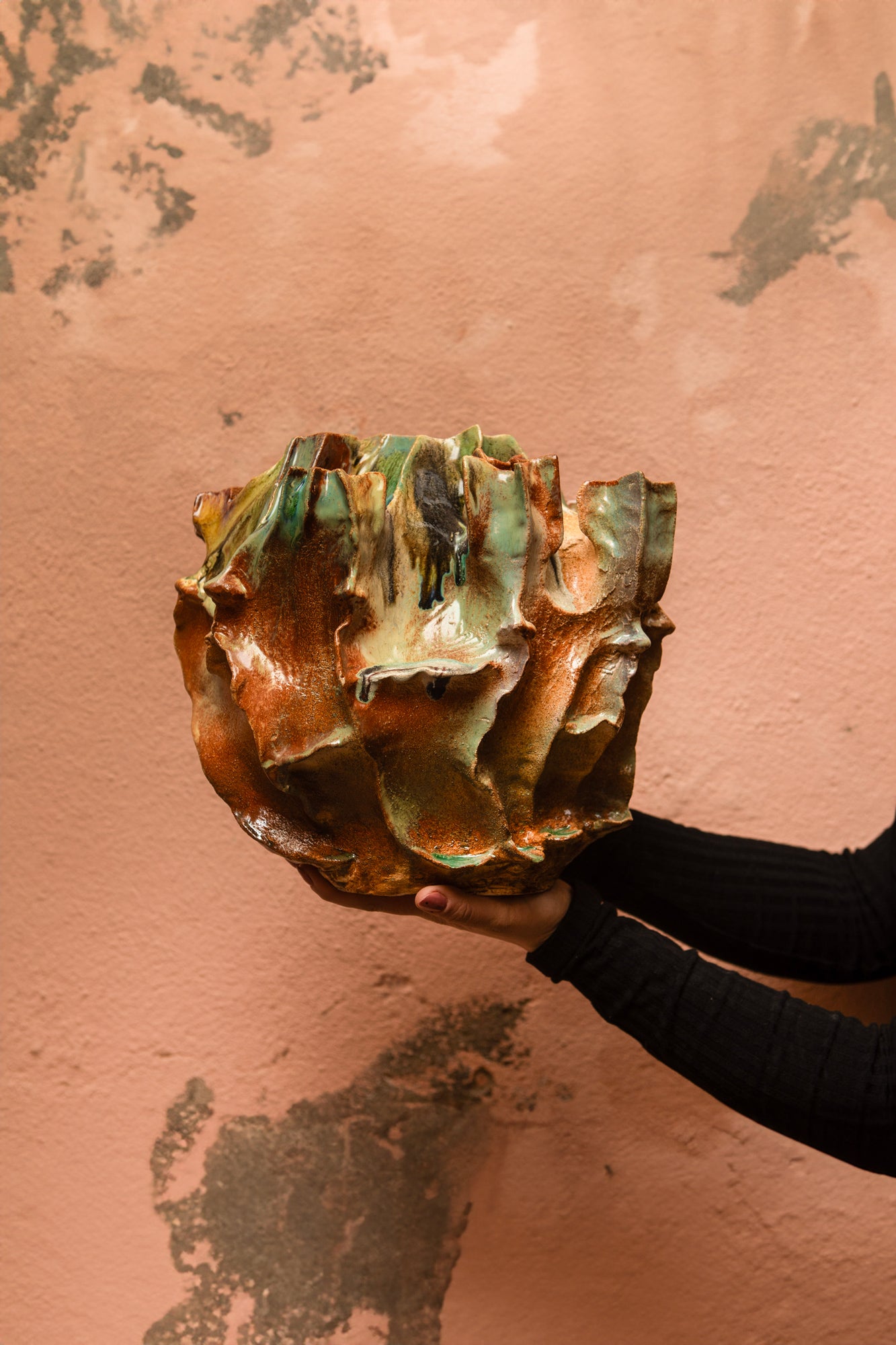Clara Rêgo (Porto, 1985) describes her love for ceramics as the kind of realization one has when falling for a best friend—something that has always been there, yet one day you see it in a different, special way. From this lifelong connection, which has now become the core of her artistic practice, Clara creates fully hand-built sculptural pieces infused with symbolism drawn from mythology, dreams, and meditation. In this interview, she shares a glimpse into her daily life in the studio, her creative impulses, inspirations, and what defines her as an artist.
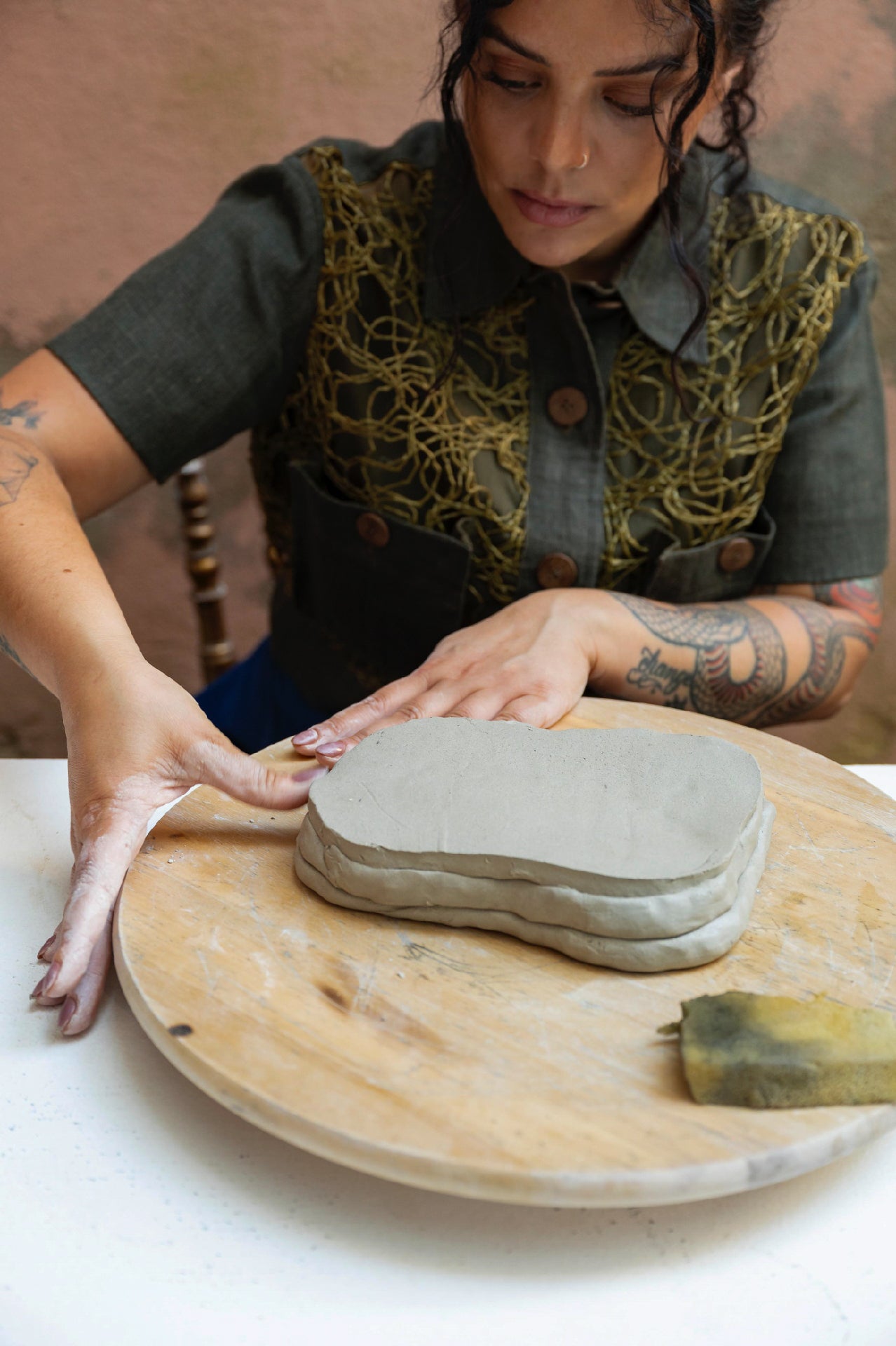
– Can you describe yourself in five words?
— Spontaneity, creativity, sense of humor, duality, and introspection.
– Why ceramics? How does clay influence the outcome of your work?
— Ceramics have been with me since an early age, although I never gave them the seriousness they truly deserved. It was almost as if they had always been there, and one day I simply woke up and saw them differently. That day, I realized that ceramics had been what I was missing all along—what allowed me to express myself, heal, and find my place in the world.
Ceramics allow me to play and explore like a scientist. Above all, they always let me build and discover through trial and error.
– Do your creations follow a common thread?
— It's usually more of a guiding feeling or emotion, along with an exercise in letting go of control so that this state can remain throughout the entire process of making a piece.
– Do you always plan the final outcome, or is there room for surprises?
— There is always room for surprises.
– Who are your creative references? Who inspires you?
— Niki de Saint Phalle, Georgia O'Keeffe, Vanessa German, Kazuhito Kawai, Raphael Emine, William Cobbing, Zoe Williams, and Huang Yong Ping, among others.
– What is your number one rule in this profession?
— For me, it's never losing curiosity.
– How do you like your workspace and schedule to be?
— I like to maintain healthy routines, so I wake up early and go to bed early as well. Between those times, there’s space for creativity and time in the studio, but I also have to deal with logistics, communication, class preparation, and other work… I used to be more rigid about my start time and had no set end time, fearing that I might slow down. Nowadays, I try to plan my time more rationally, prioritizing my mental and emotional well-being over productivity.
– Do you listen to music while working? What sounds inspire your creativity?
— Almost always, and it’s a big mix. From soul, jazz, and cinematic scores to hip-hop, and depending on the day, I might switch to techno, drum and bass, or even classical and pop.
– If you had to choose your favorite piece, which one would it be?
— Right now, probably Memória or Knot.
– You have a very active community on Instagram. Are social media essential in this profession?
— In my personal experience, yes. Of course, it depends on each person’s approach, but for me, they have been fundamental. However, I also value connections outside of social media, and I don’t always like this dependency. That’s something I continuously reflect on—finding ways to strengthen other networks and relationships without completely relying on these platforms.
– If you had to dedicate yourself to another artistic discipline, what would it be and why?
— I would love to work with metal, glass, and wood. I also love painting, even though I’m not doing it right now. But in this order, I think—because of the plasticity and transformative nature of the materials, the organic results they can produce, and the way they change state with temperature in the case of metal and glass, creating an element of surprise.
– Any advice for those thinking about pursuing an artistic career?
— Practice every day, don’t be afraid to make mistakes or share them, and try to create from a place of ecstasy rather than for approval.
– What’s next for you in the coming months?
— I have some exhibitions lined up, production of more structured series, and some ideas that, until now, have only existed on paper or in the studio.
– How do you imagine yourself as an artist in 15 years?
— Creating every day or almost every day, without limitations on scale, making large outdoor pieces that grow within their environments, hold stories, and evoke emotions in those who look at them.
